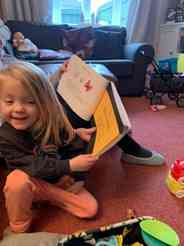Learning to read: #READING AND THE ROLE OF #PHONICS
Learning to read:
READING AND THE ROLE OF PHONICS
Introduction
The role of phonics in reading and education has been highlighted in the press this week. At a time when children are finally hoping to settle back into their learning after the pandemic, the reports have important implications for teachers, children and parents. In 2006 Jim Rose, a former HMI director of inspection at Ofsted published a report the ‘Independent review of the teaching of early reading’. The report was to address prevailing concerns with respect to reading levels in England. Following on from this, in 2007 ‘Letters and Sounds’, a resource for delivering synthetic phonics was published. Synthetic phonics defers to allowing a child to read by working more independently to decompose words into phonemic and graphemic (spoken and written) representations. Put simply the child would initially at least learn to read by breaking words up into their sounds. Perhaps a good illustration of an alternative method to teaching reading is to look at the Reading Recovery program (as validated for example by Hurry and Fridkin 2018). In line with previous elements of the teaching of reading here, letter, word meaning and comprehension are given equal importance and the teaching of reading represents a scaffolded approach to help the child to learn to read. With children struggling with their language development due to lockdown it is important for the educational sector to provide the best resources and techniques for learning. This will be especially true for learning to read and its role in accessing the entire curriculum. The latest press reports, based on current research, questioning the pivotal role of synthetic phonics as a main method for the teaching of reading are presented here. Following on from this, tips for supporting you child’s language development from birth and as preparation for reading are given.

Why Do the Press Reports About Phonics Matter?
Phonics has been the main method for the teaching of reading since 2007. It was introduced to improve reading outcomes for more children. However, according to international data ‘teaching reading in England may have been less successful since the adoption of the synthetic phonics approach rather than more’ as reported by Sally Weale, Education correspondent for the Guardian, see: (https://www.theguardian.com/education/2022/jan/19/focus-on-phonics-to-teach-reading-is-failing-children-says-landmark-study.
This data is also reported by Will Hazell, Education correspondent for the I newspaper (190122). Hazell notes that following findings from The Institute of Education, University College London (UCL), the current approach to reading is not ‘evidence-based’ and needs to be re-examined. Hazell also reports that a UCL review of over 50 experimental trials indicated that a mix of phonics and textual learning was the most effective method for teaching reading. The full report of the research can be read by following this link:
https://bera-journals.onlinelibrary.wiley.com/doi/10.1002/rev3.3314
The quote below from the full report, encapsulates the concerns of the researchers/authors, Dominic Wyse and Alice Bradbury (2022).
‘… If children are not being taught to read in the most appropriate way, because curriculum policy and teaching practices are not informed sufficiently by robust research evidence, then children's education will not be as effective as it should be.’
What do the new findings mean for me and my child?
The new findings with respect to synthetic phonics are likely to have important implications for educators including parent/carer as first teacher. It will take some time for these findings to find their way into curriculum planning. Many advocates for synthetic phonics are likely to be disappointed with these findings. The latest research does not indicate that phonics plays no role in reading development. What the findings indicate is that synthetic phonics should be part of learning to read but should not be the only or main method for the teaching of reading. Promoting language development and communication from birth with your child will be important in their journey towards reading.


What You Can Do Now?
Preparing our children for school means that they will be able to take advantage of all that the curriculum has to offer. A number of children continue to enter school without a level of oral language that will enable them to access phonics and the other methods that are likely to be used in the future to teach reading. Below are some tips and reminders of how to support your child’s language development and communication from birth.
Tips and Reminders
Have fun developing your child’s pre-reading skills
-say, sing, add actions to familiar rhymes, songs and stories
-use baby’s first sounds and words to build simple two-way communication
-use turn taking for speaking and actions
-keep it simple and build on from sounds, to words, to sentences
Together
Let’s build children’s pre-school reading readiness

To find out more:
Wizzy’s Words has been developed to address concerns with language and reading development. Please do get in touch via the contact button if you would like any support with using Wizzy’s Words.
Head to: www.wizzyswords.co.uk

